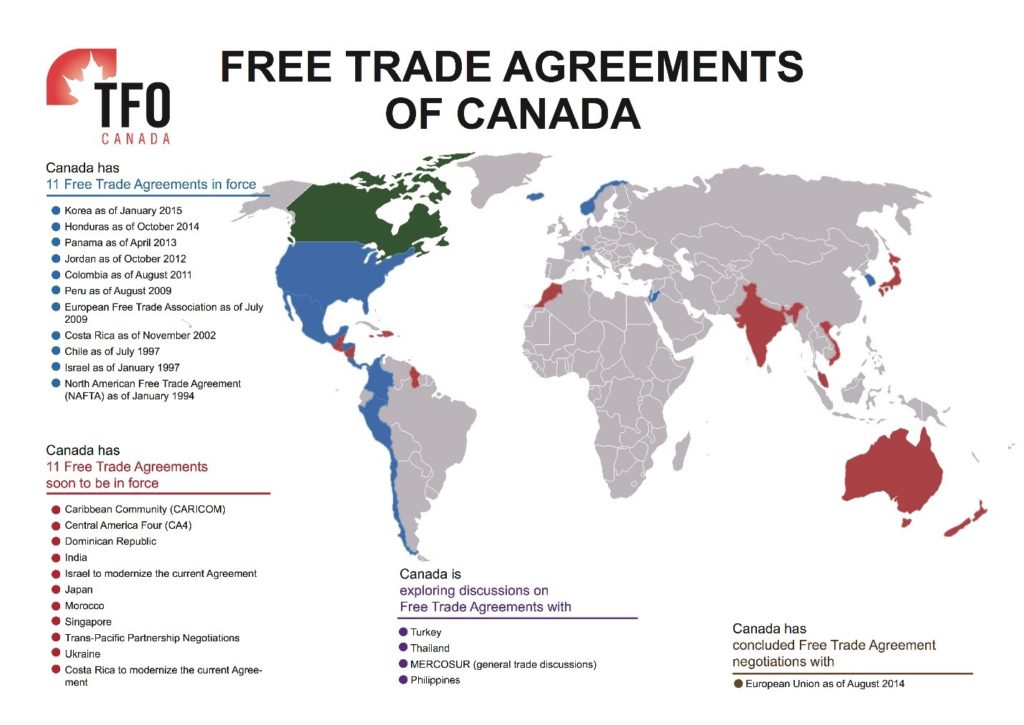Tariff Determination
Importers must provide CBSA with a detailed description of goods (based on information from the supplier), including the ten-digit HS code, value and origin. CBSA will help determine the rates of duty based on the appropriate valuation method, classification and tariff treatment. Duties are applied at the border and usually paid in person by the Canadian importer or a customs broker representative.
Rates of Duty
Tariff rates are outlined by HS code in the Customs Tariff schedule. The rate of duty for goods depends on the Canadian tariff treatment in relation to the country of origin, which can be affected by the origin of raw materials and components. There are generally four types of preferential tariff treatments:

Duty-Free and Quota-Free Imports
Under the Market Access Initiative (MAI), Canada has eliminated duties and quotas on goods imported from over 100 developing countries (GPT) and 49 least developed countries (LDCT). The only goods excluded are raw and unprocessed dairy, poultry and eggs. Trade flows from eligible countries have increased significantly since the Market Access Initiative began over ten years ago. Ability to claim benefits under GPT and LDCT is determined by Rules of Origin based on what percentage of the product and its inputs were produced in an eligible country. Goods must also be shipped directly to Canada from the eligible country and be accompanied by a Certificate of Origin. For more information, refer to CBSA guidance on the Market Access Initiative.
Eligible Countries: Consult CBSA’s List of Countries and Applicable Tariff Treatments to find out which tariff treatments are eligible for your country. When a country qualifies for multiple preferential tariffs, the lowest applicable tariff will apply.
On January 1, 2015, the GPT was withdrawn from 72 higher–income countries, whose goods must now enter under MFN status.
On March 13, 2015, the LDCT and GPT were extended to Burma (Myanmar).
Free Trade Agreements
Canada is party to several bilateral, multilateral, and regional Free Trade Agreements (FTAs). Exporters from a country that has an FTA with Canada benefit from reduced or eliminated tariff and non-tariff barriers to trade, which may make their product more competitive in Canada. Canada currently has eleven FTAs in force, covering 43 countries and more than half of the global economy. Since 2009, Canada has concluded seven new bilateral FTAs with Peru, Colombia, Jordan, Panama, Honduras, South Korea and most recently Ukraine. See the next page for a full list of FTAs in force or being negotiated.

TFO Canada improves lives through the creation of sustainable trade partnerships for exporters from developing countries with Canadian and foreign buyers.